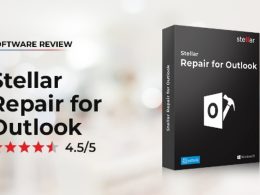Integrate weather APIs to enhance your app with real-time data, forecasts, and personalized insights. Improve user experience while managing costs and scaling globally.
The integration of weather APIs can do wonders for any web or mobile application. Whether it is food delivery apps, which need to know the exact time required to deliver ordered food so they can estimate delays caused by weather, or travel apps that can provide the best times to explore a place, the use cases are endless.
The concept of API integration may sound quite simple, but there’s more to it than just plugging in a key and hoping for the best. So, here are a few top tips to get it right, as well as how to get the most out of the weather data that’s about to be unlocked.
- Think Beyond Basics
- Handle Errors Gracefully
- Test, Test, and Test Again
- Monitor API Costs and Usage
- Set Up a Reliable Update Schedule
- Integrate Weather Data Intelligently
- Plan for Regional and Global Scaling
- Think About the Data You Really Need
Think About the Data You Really Need
Weather APIs can return a lot of data, like temperature, humidity, wind speed, precipitation levels, UV index, air quality, and so on. But do you need it all? Integrating extra data that you don’t need will just bloat your application, slow it down, and make it more difficult to deliver what’s important to your users.
For instance, if your app provides services to plan outdoor events, your requirements might be limited to precipitation forecasts and wind speed. In contrast, logistics will make you interested in road visibility and extreme weather alerts. The narrowing of focus saves bandwidth and keeps the application clean and efficient.
Plan for Regional and Global Scaling
Different locations have dramatically different weather, so if your application covers a global audience, that’s a factor to keep in mind. Some APIs have proven very good at hyper-local data while others may be better at giving wider, international coverage.
Also, it’s very important how location-specific weather data interfaces into your app. Will you require the user to physically type their location, or will you use GPS to automatically pull that information? And don’t forget about time zones, it may sound basic, but often it’s that little overlooked detail that gives way to embarrassing errors like showing nighttime weather for a city in broad daylight.
Set Up a Reliable Update Schedule
Weather data is fast-changing, so the frequency at which your app pulls updates will be important to determine. Pulling updates too often can overwhelm your servers and possibly your wallet, depending on your API pricing model. On the other side of that coin, pulling data too infrequently could leave users with stale information.
A good rule of thumb? Match the update frequency with the type of data. For instance, real-time weather apps may want to refresh every 10 minutes, while applications showing a general forecast could refresh every few hours. Most APIs will have options to tune this, so find that sweet spot that balances accuracy and performance.
Handle Errors Gracefully
Let’s face it, things can and do go wrong: APIs might be unavailable, data might not load, or you might have reached your request limit. Rather than leave your users staring at some error screen, make sure you’ve got fallbacks in place.
You could cache the last successfully fetched data and show that as a temporary placeholder, for instance. Even better, you could actually pass on the problem in a humanly sounding way, something like: “Oops! Looks like we’re having an issue loading the latest and greatest weather updates. Hold on while we work it out.” Transparency does indeed go a long way with users, even in regard to glitches.
Security Tip: Make sure to secure your API keys by storing them in environment variables or using secret management tools to avoid exposure in code repositories.
Integrate Weather Data Intelligently
Weather data is only as good as how it’s presented. Smashing a bunch of raw numbers on the screen doesn’t mean anything to users other than a meteorologist. Instead, focus on providing insight.
For example, instead of showing only a temperature of 95°F, you could show “It’s 95°F outside; perfect for the pool, but don’t forget sunscreen!”
If your app has to do with travel, you may want to alert your users with “Expect flight delays this afternoon due to thunderstorms.” Matching the weather data with the purpose of your app improves the user experience and makes the data resonate more.
Choosing the Right Weather API
Choosing the right API depends on a number of factors including real-time updates, and advanced forecasting models. According to Tomorrow.io, an American weather technology company which provides real-time weather forecasting services and APIs, it must also offer flexible integration options, which make it ideal for both small-scale and enterprise-level applications.
Example Code
python
Copy code
def interpret_weather(weather_data):
try:
temperature = weather_data
weather_code = weather_data
# Map weather codes to descriptions
weather_descriptions = {
0: "Clear skies",
1001: "Cloudy",
1100: "Partly cloudy",
1101: "Mostly cloudy",
1102: "Overcast",
4000: "Drizzle",
4200: "Light rain",
5000: "Snow",
8000: "Thunderstorms",
}
description = weather_descriptions.get(weather_code, "Unknown weather conditions")
# Provide actionable advice based on the data
if temperature > 90:
advice = "It's hot outside! Stay hydrated and avoid prolonged sun exposure."
elif temperature < 32:
advice = "It's freezing! Make sure to bundle up if you're going out."
elif "rain" in description.lower() or "drizzle" in description.lower():
advice = "Rain is expected. Don't forget to carry an umbrella!"
else:
advice = "The weather looks good. Have a great day!"
return f"{description}, {temperature}°F. {advice}"
except KeyError:
return "Unable to interpret weather data at this time."
Test, Test, and Test Again
Even after the API has been integrated, do not stop here. This must be tested in real-life scenarios and across a variety of devices.
You will also want to make sure the data reflects real-world conditions. Compare the API output against other trusted sources for the weather to make sure the API truly reports accurately. Bugs and inconsistencies here kill user trust in record time.
Think Beyond Basics
Sure, showing the weather is cool, but why stop there? Weather APIs can unlock a world of creativity for your app. For example, fitness apps can suggest ideal outdoor workout times based on weather, or retail apps can time promotions for raincoats or sunscreen.
Monitor API Costs and Usage
While weather APIs are extremely useful, they can also be expensive if your application gains popularity. Pay attention to API request limits and consider batching requests or caching data to save costs.
Wrapping It Up
The real power is unleashed only when you take the proper approach to integrating the API into your app. Finding the right API, distilling the relevant information, and prioritizing a user-centric approach is critical in converting raw weather into something far more meaningful.
Looking ahead, AI-powered forecasting and IoT integrations may provide even more personalized and predictive weather insights. Don’t just show the weather; make it useful, engaging, and fun. Now go ahead, let your application rain or shine!









